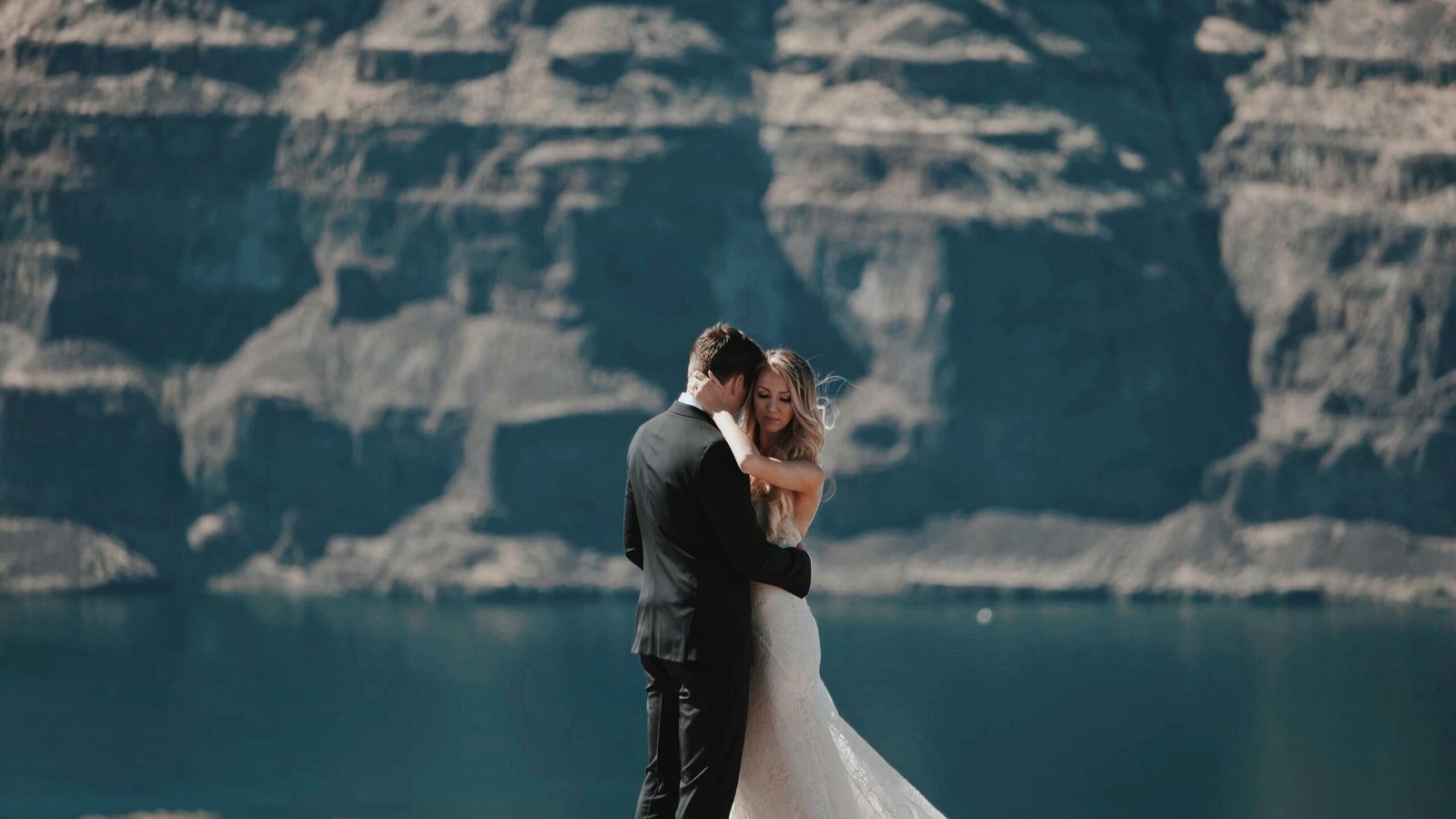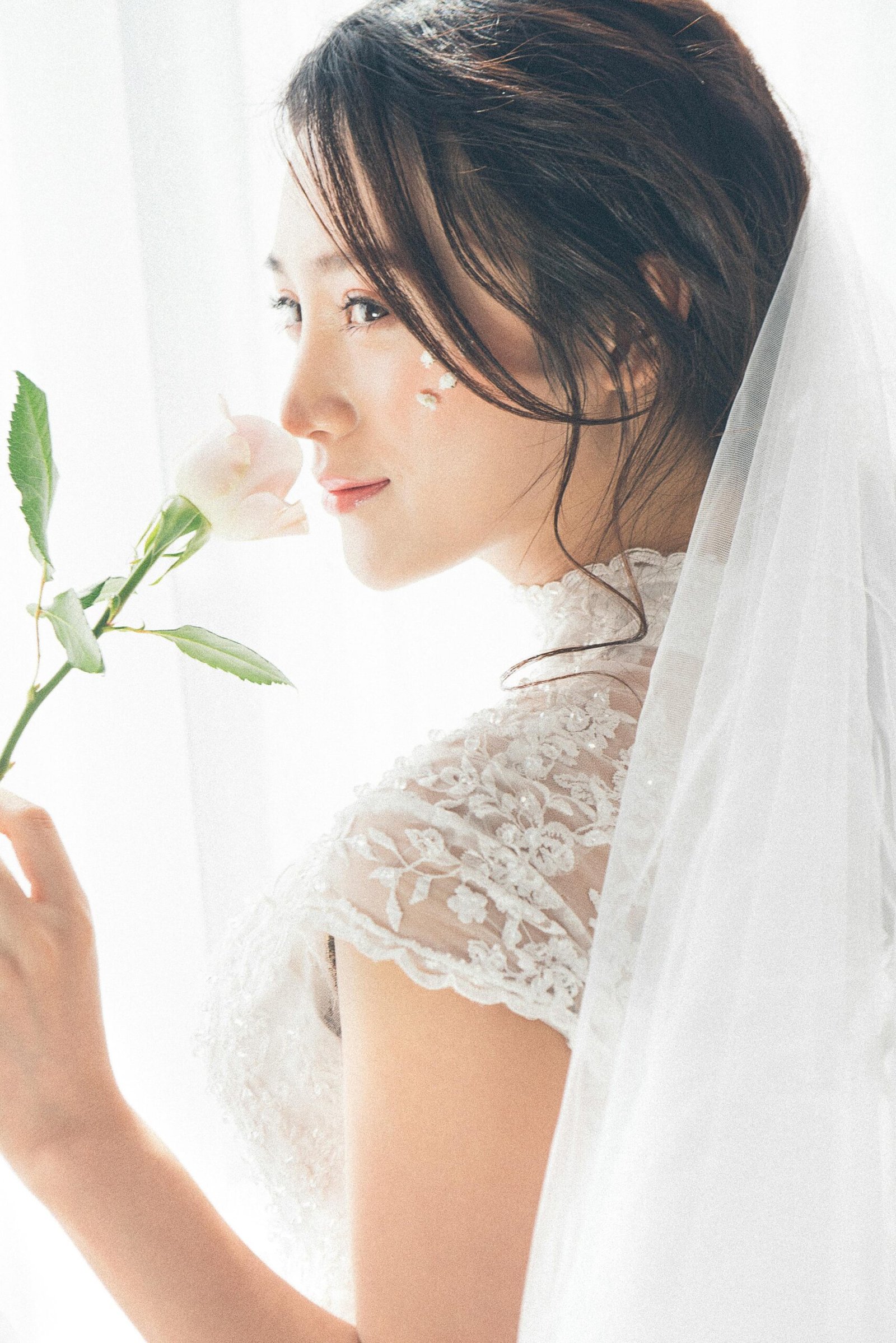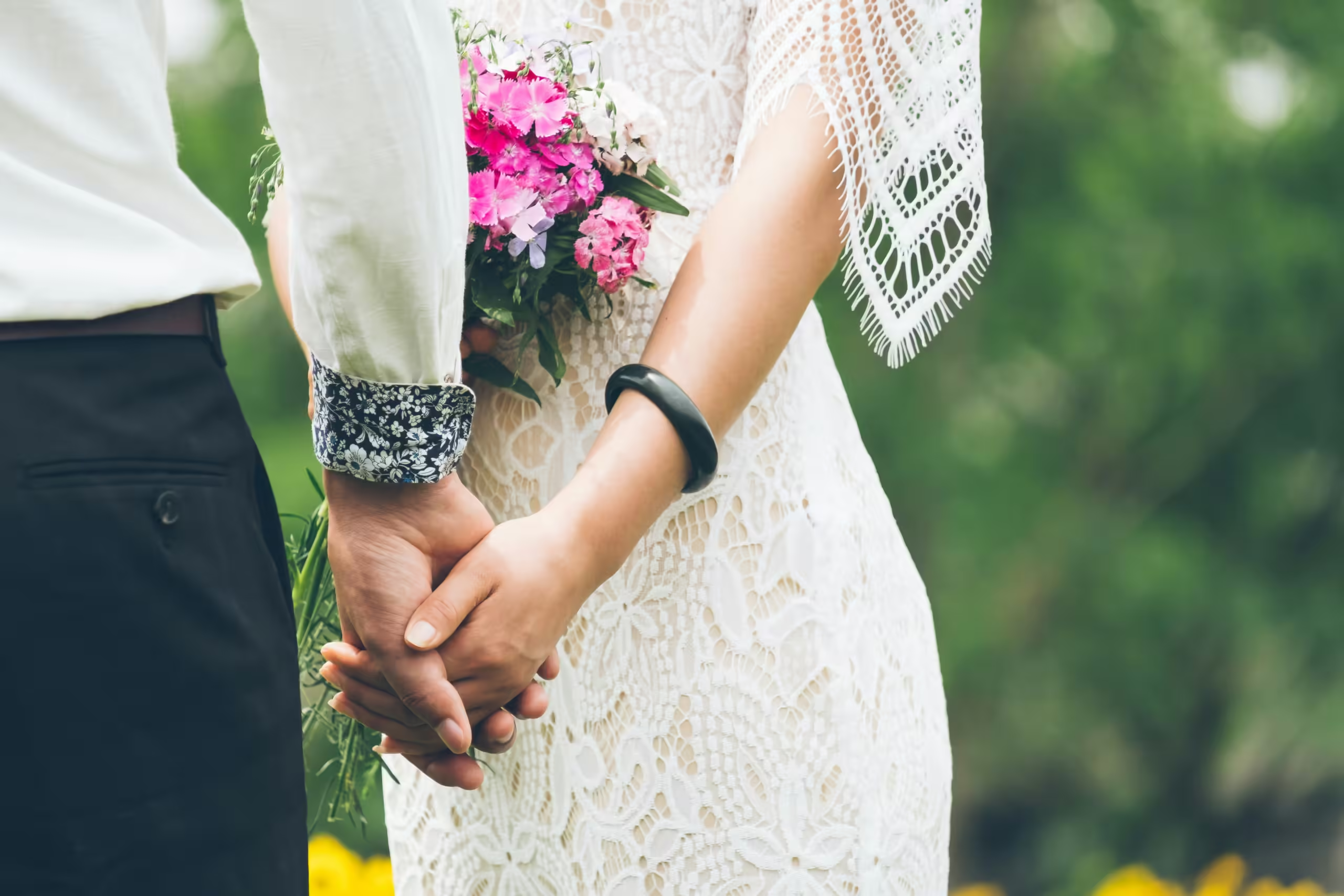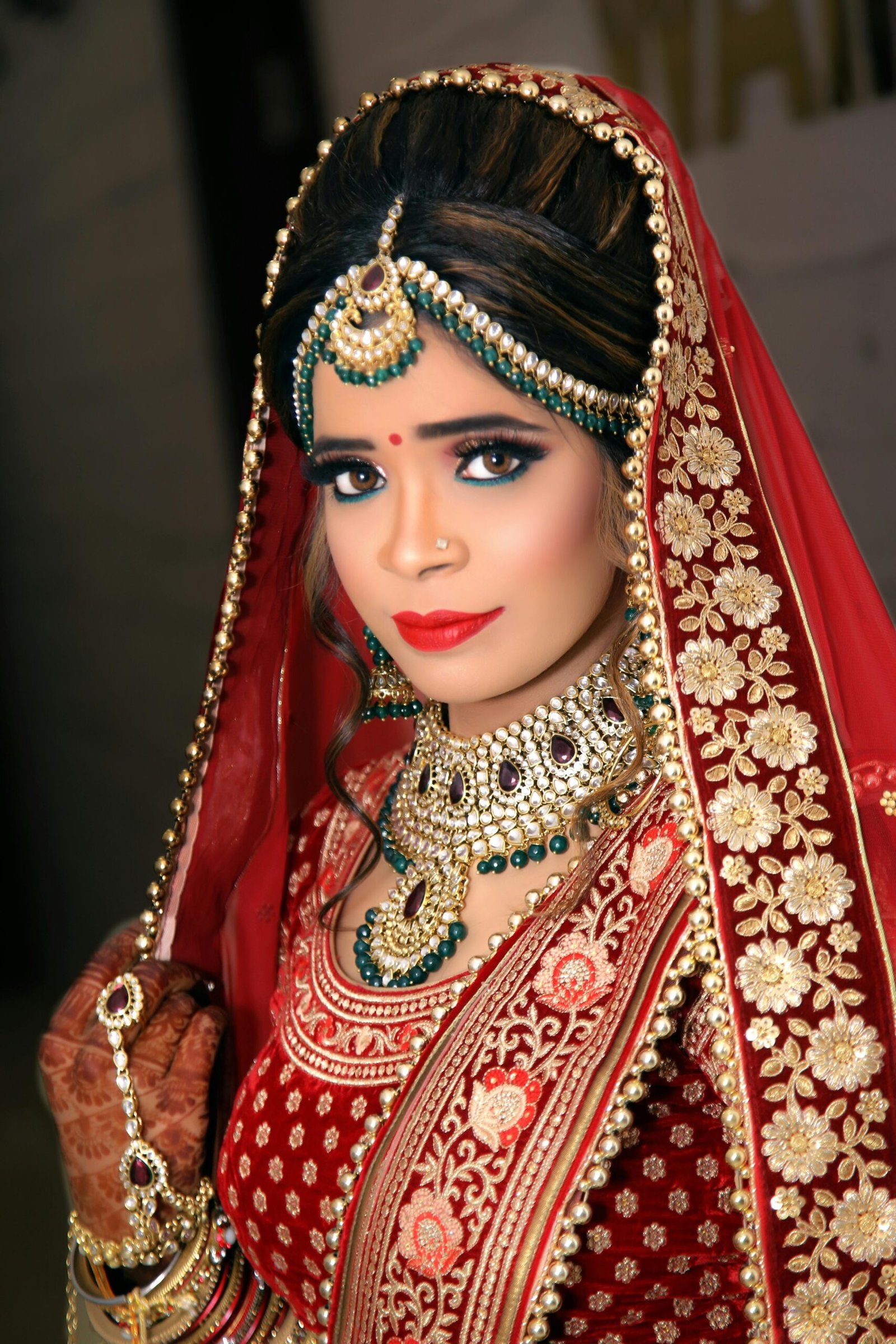Groom’s Guide: Picking the Perfect Suit for Your Wedding Day
On a day as significant as your wedding, the perfect suit is more than just attire; it is a statement of style and confidence. Wedding fashion extends beyond the bride’s dress to the groom’s ensemble, playing a pivotal role in setting the tone for the entire event. A well-chosen suit has the power to elevate the groom’s presence, making him feel confident and poised as he stands beside his partner.
Beyond the emotional boost, a meticulously selected suit complements the wedding theme, unifying the overall aesthetic. Whether the wedding is a black-tie affair, a casual beach ceremony, or a rustic countryside celebration, the groom’s suit should reflect and enhance the chosen motif. This harmony in attire ensures that the wedding photos capture a cohesive and timeless look, immortalizing the day in perfection.
Moreover, the groom’s suit creates a lasting impression not only on the guests but also in the couple’s shared memories. It is an integral part of the visual narrative of the wedding, symbolizing the groom’s personal style and the couple’s shared vision for their special day. The right suit can strike a balance between tradition and personal expression, making the groom feel like the best version of himself.
Ultimately, the importance of selecting the perfect wedding suit cannot be overstated. It is a decision that encompasses both emotional and aesthetic dimensions, contributing significantly to the overall success and memorable nature of the wedding. As we delve deeper into the groom’s guide to picking the perfect suit, we will explore various factors and considerations to ensure that every groom feels impeccably dressed for this momentous occasion.
Understanding Different Suit Styles
When it comes to wedding fashion, the groom’s choice of suit is just as crucial as the bride’s dress. Selecting the right suit style involves understanding the different options available and how each aligns with the wedding’s formality and theme. Three primary suit styles dominate the wedding arena: tuxedos, morning suits, and lounge suits.
Tuxedos are a timeless choice for formal weddings, characterized by their satin or grosgrain facings on the lapels, buttons, and pockets. Historically, tuxedos originated in the late 19th century as a less formal alternative to the tailcoat. They are traditionally worn with a bow tie and cummerbund or waistcoat. Tuxedos are ideal for evening weddings, offering a sophisticated look that complements the elegance of the occasion.
Morning suits are another classic option, particularly suited to daytime weddings. This style consists of a tailcoat, waistcoat, and striped trousers. The tailcoat, with its distinctive cutaway front and elongated back, is paired with a waistcoat and cravat or tie. Morning suits have roots in traditional British fashion and exude a sense of historical grandeur. They are perfect for formal daytime events, adding a touch of aristocratic flair to the wedding fashion landscape.
Lounge suits offer a more versatile and contemporary option. They can range from smart casual to semi-formal, making them suitable for a variety of wedding themes, from beach ceremonies to garden parties. Lounge suits typically include a single-breasted jacket, trousers, and a tie or bow tie, with fabric and color choices offering ample customization. This style is particularly adaptable to different body types and can be easily tailored to provide a flattering fit.
Choosing the right suit style is essential in ensuring the groom feels confident and looks impeccable on the big day. Whether opting for the classic sophistication of a tuxedo, the distinguished elegance of a morning suit, or the modern versatility of a lounge suit, aligning the suit with the wedding’s formality and theme is key. Understanding the nuances of each style will help in making an informed decision that enhances the overall ambiance of the wedding.
Choosing the Right Fabric and Color
When it comes to wedding fashion, selecting the appropriate fabric and color for the groom’s suit is crucial. The fabric not only influences the comfort and appearance but also determines its suitability for different seasons and climates. Popular fabric options include wool, linen, and cotton, each offering unique benefits. Wool is a versatile choice, known for its breathability and durability, making it suitable for both cooler and warmer weather. Linen, on the other hand, is ideal for summer weddings due to its lightweight and breathable nature, although it wrinkles more easily. Cotton strikes a balance, offering comfort and a polished look, perfect for spring and autumn nuptials.
The choice of color is equally significant in wedding fashion, as it sets the tone for the groom’s overall look. When selecting a color, consider factors such as skin tone, the wedding theme, and personal preference. Classic colors like black, navy, and charcoal grey remain timeless choices, providing a sophisticated and elegant appearance. These shades are versatile and complement a wide range of themes and venues. For those looking to make a statement, trending colors such as burgundy, emerald green, and deep blue offer a modern twist on traditional wedding attire.
Skin tone plays a pivotal role in color selection. Fair-skinned grooms often look best in darker shades like navy and charcoal, which provide a striking contrast. Medium to olive skin tones can carry off a wider range of colors, including lighter shades like grey and tan. Darker-skinned grooms can opt for bold colors like royal blue or even lighter hues like cream for a standout look.
Ultimately, the right combination of fabric and color will not only enhance the groom’s comfort but also align with the overall wedding fashion aesthetic. Whether opting for a timeless classic or a contemporary trend, these considerations will ensure the groom looks impeccably stylish on his special day.
A well-fitted suit is fundamental to achieving a polished and sophisticated look on your wedding day. The journey to finding the perfect suit starts with tailoring, a process that involves precise measurements, multiple fittings, and meticulous adjustments. Tailoring ensures that your suit complements your physique, enhancing your overall appearance and ensuring you look your best on this special occasion.
The Importance of Tailoring
The initial step in tailoring involves accurate measurements. Professional tailors measure key areas such as shoulder width, chest, waist, hips, and inseam. This comprehensive assessment sets the foundation for a suit that fits like a glove. The next phase involves fittings, where the suit is tried on and adjustments are made to refine the fit. Common alterations include adjusting sleeve length, taking in or letting out the jacket, and hemming trousers to the perfect length.
Key Areas to Focus On
Several critical areas require attention when tailoring a suit to ensure it fits impeccably. The shoulders are paramount; they should lie flat and the seams should align with the edge of your shoulders. A well-fitted jacket should hug the torso without being too tight, allowing for comfortable movement. The jacket length is another crucial aspect, typically ending around the mid-point of the palm when arms are at rest, ensuring a balanced silhouette. For trousers, the break—the point where the hem meets the shoe—should be just right, with a slight fold to maintain a clean, sharp look.
Enhancing Your Appearance
A tailored suit does more than just fit well; it enhances the groom’s physique and overall wedding fashion. A suit that’s perfectly adjusted to your measurements can create a streamlined appearance, emphasizing broad shoulders, a tapered waist, and well-fitted trousers. This not only boosts confidence but also ensures that every photograph captures you at your best. In essence, investing in a tailored suit is investing in a sharp, elegant look that aligns perfectly with the grandeur of your wedding day.
Accessorizing Your Wedding Suit
When it comes to wedding fashion, the right accessories can elevate a groom’s suit from ordinary to extraordinary. Choosing the perfect accessories is paramount to achieving a cohesive and polished look that aligns with both the suit and the overall wedding theme.
Ties: The tie or bow tie is often the centerpiece of a groom’s accessories. Coordinating the tie with the wedding color scheme is essential. A classic silk tie in a solid color or subtle pattern can exude elegance, while a bow tie can add a touch of whimsy. For a more modern look, consider a skinny tie or a tie with a unique texture.
Pocket Squares: A pocket square is a small detail that can make a significant impact. It should complement the tie but not necessarily match it. If the tie is patterned, a solid-colored pocket square can balance the look, and vice versa. Fold styles can range from simple to intricate, depending on the desired formality.
Cufflinks: Cufflinks serve both a functional and decorative purpose. They are an opportunity to incorporate personal touches, such as initials, family crests, or symbols that hold significance. Silver and gold are classic choices, but colored or novelty cufflinks can add a playful element. Ensure they align with the suit’s overall style and formality.
Shoes: The right shoes can tie the entire outfit together. Classic black or brown leather shoes are versatile options that work with most suits. For a more formal affair, patent leather shoes may be appropriate. Comfort is crucial, so break in new shoes ahead of time to avoid discomfort on the big day.
Balancing subtlety and statement pieces is key. While it’s important to have standout elements, they should not overpower the suit but rather enhance it. Keep in mind the wedding theme and venue when selecting accessories. A beach wedding might call for lighter, more relaxed accessories, while a formal evening event demands more sophisticated choices. By carefully selecting and coordinating accessories, a groom can achieve a well-rounded and polished look that complements both his personal style and the overall wedding aesthetic.
Considering Seasonal and Venue Factors
When selecting the perfect suit for your wedding day, the season and venue play a crucial role in shaping your decision. The time of year and the location of the ceremony can greatly influence the choice of suit styles, fabrics, and colors, ensuring both comfort and appropriateness for the occasion.
For summer weddings, lightweight fabrics such as linen, cotton, and seersucker are ideal choices. These materials are breathable and help keep you cool during warmer temperatures. Opt for lighter colors like beige, light grey, or pastel shades to complement the bright and sunny ambiance of a summer wedding. On the other hand, winter weddings call for heavier fabrics like wool, tweed, or velvet. These materials provide warmth and add a touch of elegance suitable for the season. Darker colors such as navy, charcoal, or deep burgundy are excellent choices for a winter wedding suit, aligning with the cozy, festive atmosphere.
The venue of the wedding is another significant factor to consider. For beach weddings, a more relaxed and casual approach is appropriate. Suits made from lightweight, breathable fabrics in light colors are perfect for such settings, offering both style and comfort. A linen suit in a light tan or soft blue can provide a sophisticated yet laid-back look suitable for a seaside ceremony.
For formal indoor ceremonies, classic suits in traditional fabrics like wool or a wool blend are recommended. Darker colors such as black, navy, or grey are timeless choices that exude elegance and formality, fitting well with the refined environment of an indoor venue. Additionally, a tuxedo may be considered for ultra-formal weddings, adding an extra layer of sophistication to the groom’s attire.
Understanding the influence of seasonal and venue factors on wedding fashion ensures that your suit not only looks impeccable but also feels comfortable throughout the day. By carefully considering these elements, you can select a suit that perfectly complements the overall theme and atmosphere of your special day.
Budgeting for Your Wedding Suit
When planning for your wedding day, budgeting for your wedding suit is a critical step. It involves not just the initial cost of the suit itself but also additional expenses such as tailoring and accessories. The first consideration should be setting a realistic budget based on your overall wedding finances. This budget will guide your choices between luxury options, mid-range selections, and more affordable suits.
For those looking at luxury wedding fashion, high-end designers offer bespoke suits that can range from $1,000 and upwards. These suits are crafted with premium fabrics and tailored to perfection, ensuring a flawless fit. While the cost is significant, the investment in a high-quality suit can often be justified by its longevity and the statement it makes.
Mid-range options, typically priced between $300 and $1,000, offer a balance between quality and cost. Many reputable brands provide well-made off-the-rack suits that can be tailored to fit. These suits often use good quality materials and offer various styles suitable for different wedding themes. Investing in a mid-range suit allows you to achieve an elegant look without straining your budget excessively.
For those on a tighter budget, there are plenty of affordable options under $300. Discount retailers and online stores offer a variety of stylish suits that can be tailored for a perfect fit. While these suits may not be made from the highest quality materials, with careful selection and good tailoring, they can still provide a polished and sophisticated appearance.
Tailoring is an essential aspect of wedding fashion, regardless of the suit’s initial cost. Allocating part of your budget for professional tailoring ensures that your suit fits impeccably, enhancing your overall look. Additionally, don’t forget to budget for accessories like shoes, ties, cufflinks, and pocket squares, which complete your wedding day ensemble.
In conclusion, balancing cost with quality is key when budgeting for your wedding suit. Whether opting for a luxury suit or a more affordable option, ensuring a good fit and coordinating accessories will help you look your best on your special day.
Final Touches: Grooming and Presentation
On your wedding day, every detail matters, and grooming is no exception. The importance of a well-executed grooming routine cannot be overstated, as it plays a crucial role in complementing your wedding fashion and ensuring you look your absolute best. Start with a fresh haircut a week before the big day to give your hair time to settle into its natural look. This practice prevents any last-minute mishaps and ensures a polished appearance.
Skincare is another vital aspect of pre-wedding preparation. Establish a consistent routine well in advance, focusing on cleansing, exfoliating, and moisturizing to achieve a healthy, vibrant complexion. For those prone to shaving irritation, consider using a high-quality razor and shaving cream, and finish with a soothing aftershave balm to minimize redness and bumps.
On the day itself, maintaining your suit’s appearance is equally important. A well-fitted suit is the cornerstone of wedding fashion, but it can lose its sharpness without proper care. Keep a lint roller handy to remove any stray fibers and a small stain remover pen for any unexpected spills. Additionally, ensure your tie or bowtie is perfectly aligned and your shirt remains tucked in throughout the day. For a final touch, a pocket square can add a dash of elegance and individuality to your ensemble.
Finally, the way you carry yourself can significantly impact your overall look. Confidence and good posture are indispensable. Stand tall, shoulders back, and walk with purpose. Such demeanor not only enhances your appearance but also reflects the joy and significance of the occasion. Remember, the best accessory to any outfit is confidence, and a well-groomed, well-dressed groom will undoubtedly leave a lasting impression.
Conclusion: The Perfect Suit for a Perfect Day
In choosing the perfect wedding suit, a groom must consider several essential factors. Firstly, the suit’s fit is paramount; an ill-fitted suit can detract from even the most sophisticated design. Opting for a tailored suit ensures not only comfort but also a sharp, polished appearance. Next, the fabric choice is crucial, as it affects both the suit’s aesthetic and comfort. Lightweight fabrics like linen or cotton are ideal for summer weddings, while wool or tweed suits are better suited for colder climates.
Color and style also play significant roles in wedding fashion. The suit should complement the wedding theme and the bride’s attire. Classic colors like black, navy, or gray are timeless, while bolder hues can add a unique touch. Additionally, personal style should not be overlooked; the groom should feel confident and authentic in his suit.
Accessories can enhance the overall look, adding personality and flair. Consider elements such as ties, pocket squares, cufflinks, and shoes. Each accessory should harmonize with the suit and contribute to a cohesive ensemble.
Lastly, it’s essential to start the search early and seek professional advice if needed. Consulting with a tailor or fashion expert can provide invaluable insights, ensuring the final choice is impeccable. Taking the time to try on different styles and fits will lead to a more informed and satisfying decision.
The right suit can make a groom feel special and confident, reflecting personal style and enhancing the significance of the day. With careful consideration and attention to detail, the perfect suit will not only look stunning but also create lasting memories of elegance and sophistication on this momentous occasion.
Share this content:




 Italiano
Italiano English
English Español
Español